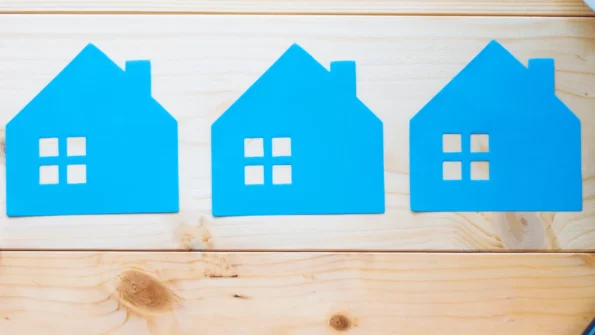It’s easy to get overwhelmed when it comes to numbers, but knowing the difference between a low or high-ratio mortgage can mean saving thousands of dollars.
We’ll cover the facts so you can make better and more informed choices on your mortgage.
What is a High-Ratio Mortgage?
A high-ratio refers to the ratio between the mortgage or loan amount and the value or the purchase price of your home.
A down payment of less than 20% of the value of your home would be considered a high-ratio mortgage. Inevitably, a low-ratio mortgage is one that includes a down payment of anything more than 20% of the value of the home.
For example, in Canada laws stipulate that home buyers must pay a minimum of 5% down on any homes priced at $500,000 or less. For homes up to one million dollars, minimum down payments rise to 10%, and anything over one million, you’re looking at down payments of 20%.
To put it practically, if you put a down payment of $90,000 on a $900,000 home, because let’s be real – house prices in Canada are ridiculously high, your loan to value ratio will be quite high.
If you had rich parents let’s say or your crypto investments paid off big time and you could put down $180,000, then your mortgage would be considered as a low-ratio, which is a good thing for your savings account.
Mortgage Insurance for High-Ratio Mortgages
From a bank or lender’s point of view, lending the money to finance your high-ratio mortgage would be a great risk for them if you’re not able to meet your payments on time or at all.
To mitigate some of this risk, lenders require home buyers to purchase mortgage insurance for their high-ratio mortgages. Homebuyers can seek out mortgage insurance from one of these
Default insurers:
- Canada Mortgage and Housing Corporation (CMHC)
- Genworth Financial
- Canada Guarantee
The CMHC is the largest of the three lenders and is considered a Crown corporation whereas the other two are private. In order to send an application to a mortgage insurer, home buyers will need to qualify for the mortgage process.
For example, to meet CMHC’s insurance requirements, the home you’re considering purchasing must be in Canada and must be below the maximum purchase price of one million dollars.
The total debt load that you’re incurring as a home buyer shouldn’t be more than 40% of your gross household income. As well, your total monthly housing costs, which include heating, principal, interest, property taxes shouldn’t be more than 32% of your gross household income.
Some other costs buyers often overlook are the closing costs of purchasing a home such as lawyer fees, GST/PST, and land transfer tax when applicable. All these costs can affect your eligibility to qualify for loan insurance on your high-ratio mortgage.
Insurance Premiums
With anything else in life, mortgage insurance is not free. For CMHC insurance, you will need to pay insurance premiums based on your mortgage’s loan-to-value ratio.
The premiums are calculated as a percentage of the total borrowed amount to purchase the home. The higher the loan-to-value ratio, the higher your insurance premium will be. There are many tools to calculate your premiums including the CMHC insurance premium calculator.
Additionally, the home buyer has a choice of adding their CMHC premiums to their mortgage amount or paying it in full upfront.
The Amortization Period
With a low-ratio mortgage or otherwise known as a conventional mortgage, the maximum amortization period is 35 years. For a high-ratio mortgage, the maximum period is 25 years.
A drawn-out amortization period gives allowance to home buyers to make smaller monthly mortgage payments. This definitely helps new couples or families who are starting life on a tighter monthly budget.
However, there is a catch to issuing a longer amortization period which is that buyers will be paying more interest over the course of their mortgage loan.
In the case that your situation changes and you would need a longer amortization period to pay off your loan, you can opt for a conventional mortgage instead of a high-ratio one by increasing your down payment.
The Potential Risks of a High-Ratio Mortgage
One of the unexpected risks that buyers don’t consider before taking out a high-ratio mortgage is stagnant or declining property values. In the chance that buyers need to sell their home, and the value of the home has not changed since the purchase date or has gone significantly down, the buyer might risk having insufficient funds to repay the mortgage.
The high costs associated with putting a house on the market to sell can further aggravate the issue putting Canadian homebuyers in a financial pickle.
While high-ratio mortgages give people a chance to own a home that they otherwise might not have been able to afford, there are drawbacks to consider before diving in headfirst.
Alternatively, potential home buyers might choose to rent or take out a conventional mortgage once they have saved a bigger down payment to mitigate the risks.







